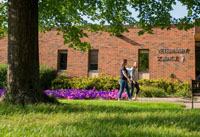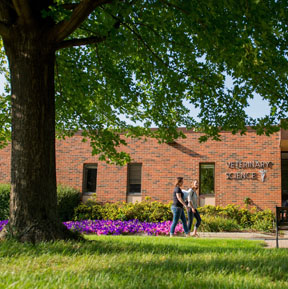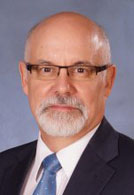
SDSU building

Photo courtesy of South Dakota State University
South Dakota State University offers pre-veterinary undergraduate studies. Plans to add the first two years of a four-year veterinary school would require a $1.9 million building remodel.
After four years of discussion and study, a prospective veterinary-school partnership between South Dakota State University and the University of Minnesota has reached decision time.
Following a review of the proposal by South Dakota Board of Regents last week, SDSU is poised to request funding by the state Legislature to establish a program under which SDSU would provide the first two years of a DVM-degree program on its campus in Brookings. The veterinary students would go 220 miles east to St. Paul, Minnesota, for their third and fourth years of training. The University of Minnesota has had a veterinary school since 1947.
If all goes as envisioned, SDSU would admit its first class of about 20 students in 2021.
The program would be the fifth such veterinary-education partnership in the country. Similar collaborations are in place at the University of Nebraska with Iowa State University; Utah State University with Washington State University; Montana State University also with Washington State University; and the University of Alaska with Colorado State University.
A 35-page feasibility report on the South Dakota-Minnesota plan prepared by academics at both schools was approved by SDSU President Barry Dunn, who expressed "enthusiastic support" in a Nov. 7 memo to Dennis Hedge, SDSU provost and vice president for academic affairs.
Dennis Hedge

Dennis Hedge is provost and vice president of academic affairs at South Dakota State University.
Hedge sent the report to Dunn in advance of a Dec. 5 presentation to state regents. The program would emphasize rural veterinary practice. In a statement of purpose and need, the report says: "A collaborative program in rural veterinary medical education meets a regional need for additional veterinarians, contributes to continued growth of the animal agriculture industry, creates a direct pathway to veterinary careers for South Dakota students, and strongly addresses veterinary student debt load, a significant consideration for future practitioners." By allying with Minnesota, South Dakota would obtain more affordable in-state pricing for its resident students throughout their veterinary school years.
In making the case that South Dakota needs more veterinarians, especially those who work with large animals, the report states:
"The American Veterinary Medical Association, as of September 2018, listed 51 vacancies requiring veterinarians in South Dakota, North Dakota and Minnesota. The South Dakota Veterinary Association listed 16 jobs for veterinarians in the state and six more in adjoining states. Nationally, the AVMA listed 176 open jobs for veterinarians in equine, bovine, swine or poultry areas." The report doesn't specify where the listings are posted.
The report continues: "Yet only 1.8 percent (1,255 veterinarians) of the nation's 117,735 veterinarians in 2017 described their practices as exclusively large animal, according to the AVMA. Similarly, only 4.5 percent (or 3,223 veterinarians) held positions in practices that care predominantly for large animals."
(AVMA figures actually show 117,735 job positions held by 110,531 practitioners — some veterinarians hold more than one position. The 110,531 figure might include retirees.)
The report also notes that "[s]pecifically in South Dakota, the food animal industry is growing across all sectors with construction or expansion of processing plants in Aberdeen, Huron, Sioux Falls, Lake Norden and Brookings. Additionally, South Dakota Animal Disease Research and Diagnostic Laboratory scientists have diagnosed four new, highly contagious diseases in the past two years."
Need vs. affordability
A need for rural practitioners is a common theme of proposed new veterinary schools. For example, Texas Tech University proposes to open in 2021 what would be the second veterinary school in Texas, with an eye toward bringing veterinarians to underserved rural communities.
Lincoln Memorial University, based in Harrogate, Tennessee, opened a veterinary school in 2014, emphasizing a need for veterinarians in rural Appalachia.
The concept of expanding veterinary school capacity as a way to supply veterinarians to underserved, usually rural, communities is controversial because oftentimes, an area is underserved because it cannot economically support a veterinary practice.
Dr. Tami Radney, a veterinarian in Indiana with a history of working in large animal medicine, said the working conditions can be challenging, as well.
"I have practiced mixed animal, dairy and equine in North Dakota; Minnesota; Nebraska and Montana," she wrote recently on a message board of the Veterinary Information Network, an online community for the profession and parent of the VIN News Service. "I love the rural areas; the people; the animals, BUT I am currently in a small animal only practice; working 4 10-hour days; no emergencies; guaranteed lunch hour; full benefits and making more than double what I made in large animal. It's not just that you love that lifestyle. You need to make an adequate living, have a good work-life balance and be able to retire with money and a healthy enough body to enjoy that money."
Moreover, there's no guarantee that students who indicate interest in large animal medicine will, in fact, end up in large animal practice. Radney said she knows of students who, aware of many schools' interest in bolstering the ranks of rural veterinarians, "adamantly expressed to the admissions [officers] that they were definitely going to do large animal just to get accepted."
Hedge, the SDSU provost, said the new program would be decidedly pitched toward rural medicine in and out of the classroom. "Certainly, the curriculum would align with Minnesota's, but our emphasis and thrust from the student experience would be on rural veterinary medicine production and practice," he said. "I think we will definitely appeal to students in that mode of practice because that's the way the program's curriculum and extracurricular activities will be focused."
The South Dakota Veterinary Medical Association earlier this year endorsed the general concept of bolstering rural veterinary education in the region.
Dr. Trevor Ames

Dr. Trevor Ames is dean of the University of Minnesota College of Veterinary Medicine.
Dr. Trevor Ames, dean of the UMN veterinary school, said Minnesota has experience gauging applicants' genuine interest in rural practice. For some 14 years, he said, the school has offered a program whereby students experienced with food animals can as undergraduates be provisionally accepted into the veterinary school. If they meet academic standards, they are admitted after three years of undergraduate studies, rather than the usual four years.
"We have had very high success with students staying in that program and, after graduation, working in predominantly food animal practice," Ames said. "So I think we feel confident that we would be able to judge and evaluate applicants based on not just stated areas of interest, but also what they have done in terms of experience prior to their application."
It was Ames who in 2014 proposed the rural veterinary medicine collaboration with SDSU. "I believe that without intentional programs that are aiming to meet this need, we will see an increasing shortage of these much-needed practitioners that basically secure our food supply," he said.
Ames noted that the state of Minnesota has a loan repayment program for veterinary-school graduates who work predominantly with food animals in the state. He said the program provides five veterinarians with up to $15,000 a year for five years toward their loans.
The SDSU feasibility report cites a 2016 AVMA report that nationally, "the average debt incurred in pursuit of a DVM degree approaches $250,000."
Veterinary-school debt figures vary widely depending on how they're sliced and diced. Bridgette Bain, associate director of analytics in the AVMA Veterinary Economics Division, reported in an Oct. 11 article published by DVM360 Magazine that the average student debt of U.S. veterinary school graduates in 2017 was $138,067 or $166,714, depending on whether all students or only students with debt are counted. Graduates of private institutions and those paying nonresident prices at public institutions have a higher mean debt, ranging from $195,000 to $230,000, according to the 2018 AVMA & AAVMC Report on The Market For Veterinary Education.
Asked whether South Dakota is considering a loan repayment program similar to Minnesota's as an incentive for graduates to enter rural practice, Hedge said: "Those programs are always attractive, but that's not something we've built in or are planning on."
However, South Dakota program advocates say the partnership with Minnesota would give residents who aspire to become veterinarians a less expensive educational option. To date, almost all South Dakotans wishing to go to veterinary school have had to pay out-of-state tuition and fees.
The exceptions are six students each year who receive subsidies that enable them to attend veterinary school at Iowa State University for the same price as Iowa residents. The subsidies from the state of South Dakota total $615,450 per year and are rising as tuition rises. The SDSU veterinary program plan calls for phasing out the Iowa State subsidies and diverting the money to the SDSU program, a change that requires legislative action.
South Dakota residents accepted into the collaborative program would be charged throughout their four years of studies the same tuition and fees charged to UMN veterinary students, which in 2017-18 was $31,700 ($31,984 in 2018-19; including living expenses and associated costs, $50,862).
For comparison purposes, the report cites one year's tuition and fees at the eight veterinary schools closest to Brookings as ranging from $48,066 at Iowa State to $60,980 at the University of Missouri. (The figures don't include living expenses, transportation, books or supplies.)
Program logistics detailed
As envisioned, the SDSU program annually would enroll 20 to 22 veterinary students, some of whom might be from outside South Dakota. UMN currently admits 105 students per year. Ames said UMN has existing classroom space to accommodate the third-year arrivals from SDSU. In order to free capacity for clinical training in the fourth year, UMN plans to reduce the number of students that it currently accepts from Ross University and St. George's University for their clinical year. Located in the Caribbean, Ross and St. George's do not have teaching hospitals.
According to the feasibility report, the SDSU program would have two full-time administrators and 4.3 full-time-equivalent teaching faculty.
Under a financial model laid out in the report, annual operating expenses of $1.02 million largely would be covered by tuition and fees, and wouldn't require new state funds. However, program advocates propose eliminating the Iowa State subsidy and redirecting most of the $615,000 to provide scholarships to qualified South Dakota residents. Some of the redirected funds would go toward the operating budget, as well. Establishing the program also will require startup dollars as well as a capital outlay of an estimated $1.9 million for facility renovations. A funding source for capital expenses is yet to be determined.
Building and infrastructure needs include a veterinary anatomy laboratory, expanding the university's wireless internet capacity, clinical training sites, and possibly a truck serving as a mobile veterinary clinic.
SDSU will request from the Legislature one-time startup funds of $275,000 a year for three years beginning in July.
A fall 2017 survey of SDSU students in an existing pre-veterinary program found high interest in a local DVM-degree program, the report says.
Among those interested in attending veterinary school, 82.6 percent, or 38 of 46, "answered 'yes' when asked if they have interest in this ... option," the report states. "Most were freshmen and sophomores, the students who would comprise the first cohort" of a program that begins in 2021.
The school also anticipates recruiting among high school students active in 4-H, FFA (Future Farmers of America) and other groups focused on agriculture and rural activities.
Update: South Dakota lawmakers passed, and the governor signed on March 11, 2019, legislation to provide funding for a veterinary program at SDSU.